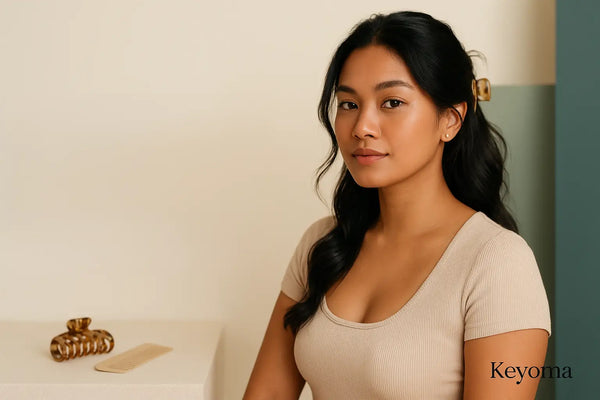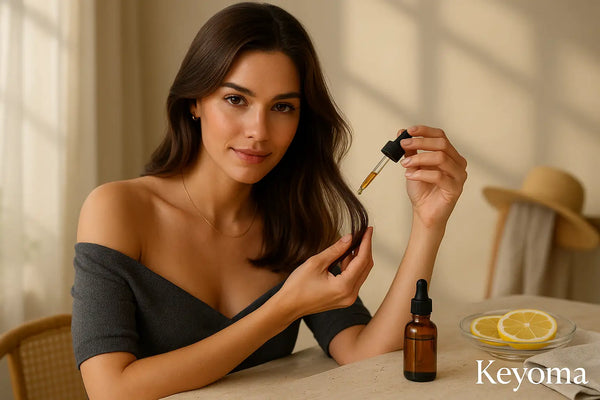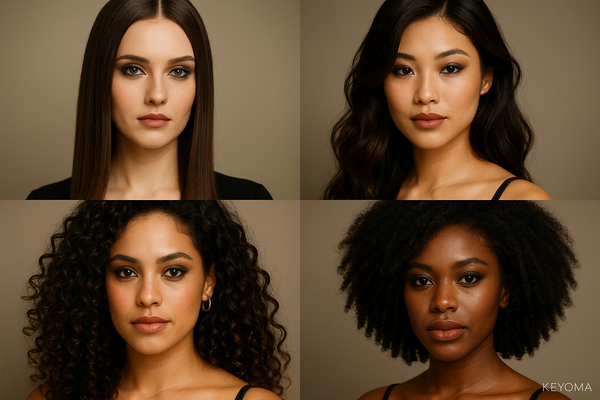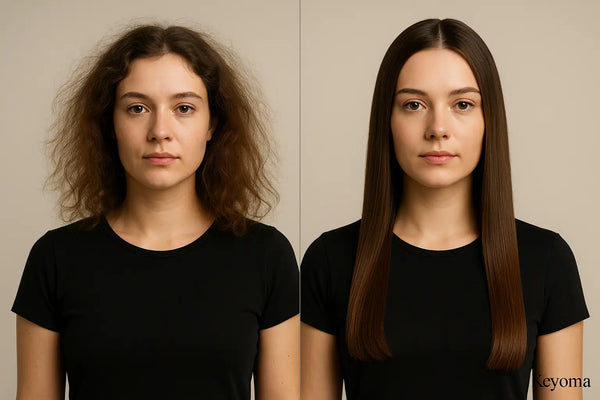Last updated
Sep 18, 2025
Evening Primrose Oil for Hair: What Helps and What to Avoid
Published on
Sep 18, 2025
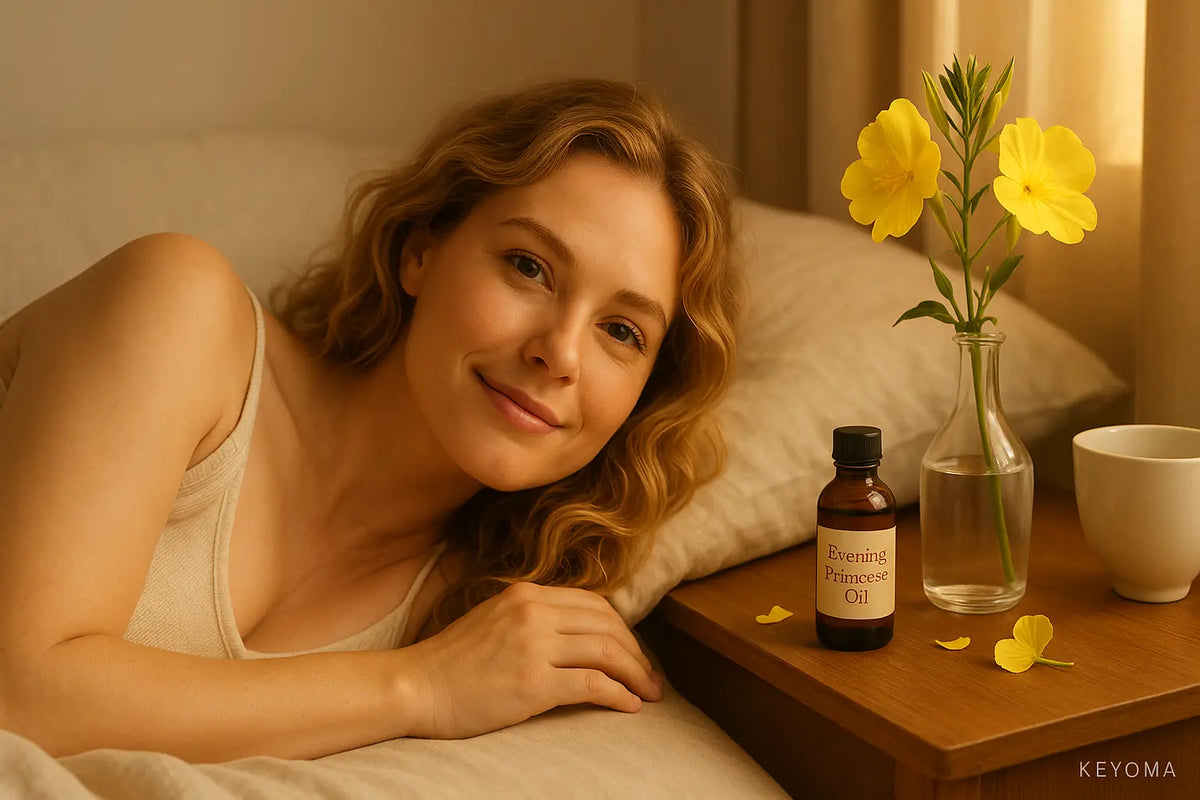
In this article
This yellow-blooming herb has several health uses and may ease menopause symptoms like hair loss. It’s most often taken as a daily capsule, but research hasn’t confirmed whether long-term use is safe or effective.
The evening primrose plant is linked to a few potential benefits, including hormone-balancing effects plus anti-inflammatory and antioxidant activity.
This yellow flower, also called night willow herb, is a popular supplement. People usually take it by mouth in pills or capsules, though you’ll also see it in topical ointments and some beauty formulas.
Studies suggest the oil from this night-blooming herb, known as evening primrose oil (EPO), may help reduce hair loss during menopause.
Key Takeaways
-
Evening primrose oil may support hair during menopause through anti-inflammatory and antioxidant properties.
-
Key components include linoleic and gamma-linolenic acids, with vitamin E providing antioxidant effects.
-
Proposed actions include reducing scalp inflammation and promoting growth via arachidonic acid pathways.
-
Short-term use appears safe, long-term safety remains unclear, avoid with pregnancy, anticoagulants, epilepsy, schizophrenia, hormone-sensitive cancers.
What is Evening Primrose Oil?
Evening primrose (Oenothera biennis) is native to North America, Central America, and parts of Europe. Its yellow petals open for just one evening before wilting. Beyond its looks, it carries medicinal significance; historically, Native Americans used the seed oil for minor wounds, digestive issues, and hemorrhoids.
Evening primrose oil is largely made up of essential fatty acids like linoleic acid, gamma-linolenic acid, and glutamine. Linoleic acid is an omega-6 your body can’t make on its own and is needed for overall health.
Evening Primrose vs. Common Primrose: Key Differences
Evening primrose oil comes from the seeds of Oenothera biennis, which isn’t the same plant as common primrose (Primula vulgaris). Evening primrose is valued for its oil’s anti-inflammatory properties and its potential to support hair health. Common primrose is mainly grown for ornamental blooms and isn’t widely used medicinally.
Benefits of Evening Primrose
Now that you know the basics, let’s look at why evening primrose oil shows up in hair care. In the next section, you’ll see where it might help, what outcomes to expect, and how to set realistic goals so you can evaluate results in your routine.

May Promote Hair Growth
Linoleic acid in evening primrose oil is a building block for arachidonic acid, a fatty acid shown to stimulate hair growth. Your liver can convert linoleic acid into arachidonic acid using specific enzymes.
Arachidonic acid may support growth by improving hair-follicle cell health, boosting growth-factor production, activating signaling pathways, and extending the hair’s growth phase.
This can translate to hair that’s thicker, longer, and healthier. While more research is needed to map the mechanisms, current evidence points to arachidonic acid as a promising option for hair health.
May Reduce Inflammation
Evening primrose oil contains gamma-linolenic acid (GLA), an omega-6 known for anti-inflammatory action. Although data on scalp-specific inflammation are limited, its role in conditions like atopic dermatitis has been examined.
Sterols in evening primrose oil may also add to this effect. By calming scalp inflammation, EPO could create a healthier environment for growth and limit follicle damage.
Antioxidant Properties
Evening primrose oil naturally provides vitamin E, which can support hair health. Vitamin E works as an antioxidant, helping neutralize free radicals. These unstable molecules can damage key follicle components and interfere with growth.
Antioxidant support may encourage a healthier scalp and better growth conditions, though research on EPO and hair growth is still emerging and results can vary.
Skin-Nourishing Effects
Evening primrose oil supplies nutrients and antioxidants that support both scalp and skin. Applied to the scalp, it may improve scalp comfort and support new growth. Gentle scalp massage can also boost local blood flow, which may further encourage growth.
Potential Side Effects and Risks to Consider
EPO is generally safe for short-term use. It isn’t known if it remains safe beyond 4 to 6 months.
Talk with your doctor before trying EPO or any complementary remedy. It’s generally well tolerated, but side effects and drug interactions are still possible.
Avoid using EPO without medical guidance if you:
-
are currently pregnant
-
take blood thinners such as warfarin (Coumadin)
-
have epilepsy
-
have schizophrenia
-
have a hormone-sensitive cancer, like breast or ovarian cancer
-
have surgery scheduled within the next two weeks
How to Use Evening Primrose Oil in Your Hair-Care Routine
You know the why, so here’s the how. For me, a pea-size amount per section felt light and comfortable. Evening primrose oil works best when you match the method to your scalp and styling habits.
Consider where you want comfort, slip, or shine, and start with small amounts to see how your hair responds. I’ll walk you through simple, practical ways to add it without overcomplicating your routine.
Use as a Scalp Treatment
Applying evening primrose oil straight to the scalp can address dryness, irritation, and flakes. A gentle massage may also increase blood flow, which could support growth.
For best results, coat the scalp, leave it on for at least 30 minutes or overnight, then wash with a mild shampoo.
Include this once or twice weekly as part of your regular care routine.
Add to Homemade Hair Masks
Blend evening primrose oil with kitchen staples like honey, avocado, or yogurt to make rich masks. Apply to damp hair from roots to ends, leave for 20–30 minutes, then rinse. A weekly mask can deeply condition and revive shine.
Use as a Leave-In Conditioner
If your hair is especially dry or damaged, use a few drops as a leave-in on damp ends. It can help with detangling, tame frizz, and offer light protection and moisture through the day.
Start a Safe Natural Hair Care Routine With Keyoma
Evening primrose oil offers antioxidant and anti-inflammatory support, among other potential benefits. It may also help with hair loss, which is common during menopause.
Research indicates EPO might encourage new growth while supporting scalp comfort.
For step-by-step guides, ingredient breakdowns, and routine ideas, follow the Keyoma hair care blog and connect with us on social for weekly tips and updates.
Featured Product
100% Pure Batana Oil + Rosemary
Learn more about Batana Oil
Your Cart
Your Cart is empty
Let's fix that
You might like...
Search our store



